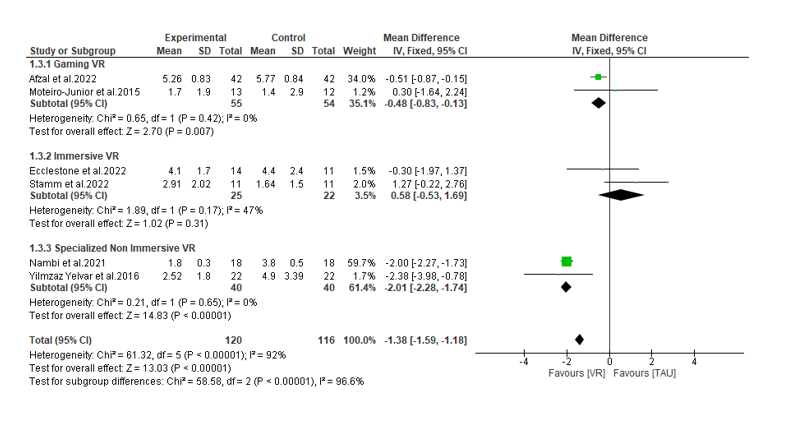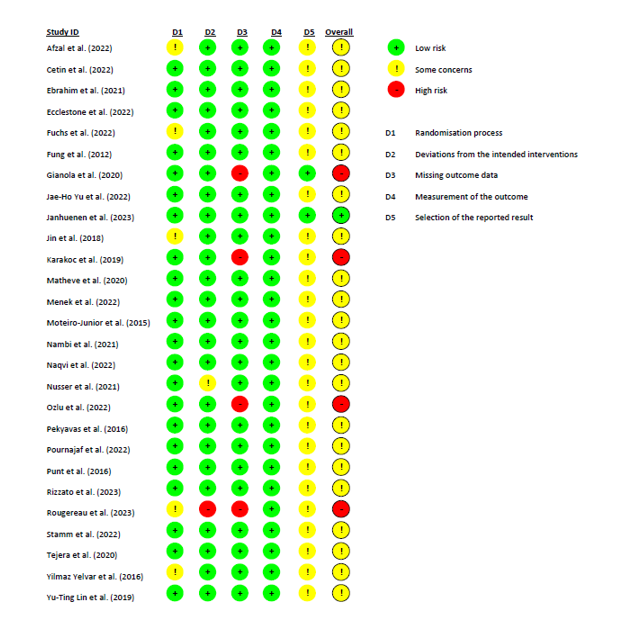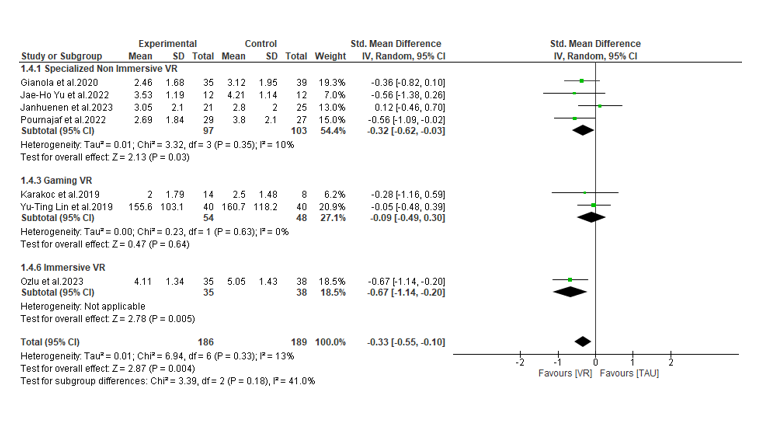Mirko Zitti, University of Rome La Sapienza Department of Human Neuroscience, Rome,Italy
Martina Regazzetti, IRCCS San Camillo Hospital, Lido of Venice,Italy
Giorgia Pregnolato, IRCCS San Camillo Hospital, Lido of Venice,Italy
Sara Federico, IRCSS San Camillo Hospital, Lido of Venice,Italy
Luisa Cacciante, IRCSS San Camillo Hospital, Lido of Venice,Italy
Blazej Cieslik, IRCSS San Camillo Hospital, Lido of Venice,Italy
Andrea Ricci, Alma Mater Europea, Maribor, Slovenia
Filippo Maselli, University of Rome La Sapienza Department of Human Neuroscience, Rome,Italy
Lorenzo Storari, University of Rome La Sapienza Department of Human Neuroscience, Rome,Italy
Pawel Kiper, IRCSS San Camillo Hospital, Lido of Venice,Italy
Musculoskeletal pain is one of the primary symptoms that prompt patients to seek physiotherapy consultations. The use of virtual reality in physiotherapy is rapidly expanding across various areas. While it is already well-studied in the neurological field, there is a notable lack of research in the musculoskeletal domain. This review aims to investigate the effectiveness of virtual reality in pain relief in different anatomical regions.
The research, conducted on MEDLINE (via PubMed), Cochrane Library, Scopus, Web of Science and Embase, included randomized controlled trials that evaluate the effectiveness of virtual reality interventions, whether immersive, specialized non-immersive and through gaming platforms. The treatment was compared to conventional rehabilitation. Primary outcomes focused on pain, with secondary outcomes assessing quality of life. Search was carried out up to October 31, 2023. All patients 18+ with musculoskeletal disorders in various anatomical regions, both treated conservatively and post-surgery, were included. However, central and peripheral neurological disorders, as well as rheumatic diseases, were excluded. All those treatments included under telerehabilitation, teleconsultation methods, robotic interventions and exoskeletons were excluded. The selection of studies was performed by four independent reviewers. Two of them have experience in musculoskeletal physiotherapy, and the other two have experience in virtual reality . Pairs were formed consisting of a reviewer expert in virtual reality and one in musculoskeletal physiotherapy. The meta-analysis was performed using RevMan 5.4 and a subgroup analysis was also done between immersive virtual reality, specialized non-immersive virtual reality and exergaming. The quality of the evidence was assessed with the Cochrane risk of bias tool(RoB2).This study is registered on PROSPERO, number CRD42023466977.
Out of 1265, twenty-seven articles met the eligibility criteria, with 1191 participants overall. Twenty articles contributed to the meta-analyses. Significant results were found regarding pain relief in knee district (SMD=-0.33; CI -0.55; -0.10; I21 13%, P < 0.004), especially for the subgroup specialized non-immersive virtual reality (SMD=-0.32; CI -0.62; -0.03; P <0,003; I2 = 10%,). For the other districts, the heterogeneity found was too high to draw strong recommendations.
Virtual reality demonstrates potential in treating pain associated with musculoskeletal disorders; however, interventions must be tailored to individual patients and their specific conditions. Given the moderate to low methodological quality of the studies included, along with the heterogeneity in VR modalities, dosages, and exercise programs, further research is required to determine its true efficacy in alleviating pain across various musculoskeletal disorders. Larger, more comprehensive studies, designed to address specific conditions and employing distinct virtual reality interventions, are necessary to provide deeper insights into the effectiveness of virtual reality in pain management within the musculoskeletal domain.
Chaplin E, Karatzios C, Benaim C. Clinical Applications of Virtual Reality in Musculoskeletal Rehabilitation: A Scoping Review. Healthcare [Internet]. 2023 Dec 15 [cited 2024 Apr 26];11(24):3178. Available from: https://www.mdpi.com/2227-9032/11/24/3178
Rutkowski S, Kiper P, Cacciante L, Cieślik B, Mazurek J, Turolla A, et al. Use of virtual reality-based training in different fields of rehabilitation: A systematic review and meta-analysis. J Rehabil Med [Internet]. 2020 [cited 2024 Apr 26];52(11):jrm00121. Available from: https://medicaljournalssweden.se/jrm/article/view/3752
Gumaa M, Rehan Youssef A. Is Virtual Reality Effective in Orthopedic Rehabilitation? A Systematic Review and Meta-Analysis. Physical Therapy [Internet]. 2019 Oct 28 [cited 2024 Apr 26];99(10):1304–25. Available from: https://academic.oup.com/ptj/article/99/10/1304/5537309
Brady N, McVeigh J, McCreesh K, Rio E, Dekkers T, Lewis J. Exploring the effectiveness of immersive Virtual Reality interventions in the management of musculoskeletal pain: a state-of-the-art review. Vol. 26. 2021.
Collado-Mateo D, Merellano-Navarro E, Olivares P, Garcia-Rubio J, Gusi N. Effect of exergames on musculoskeletal pain: A systematic review and meta-analysis. Vol. 28. 2018.
Padilla-Castañeda MA, Sotgiu E, Barsotti M, Frisoli A, Orsini P, Martiradonna A, et al. An Orthopaedic Robotic-Assisted Rehabilitation Method of the Forearm in Virtual Reality Physiotherapy. Journal of Healthcare Engineering [Internet]. 2018 Aug 1 [cited 2024 Apr 26];2018:1–20. Available from: https://www.hindawi.com/journals/jhe/2018/7438609/
Nagpal AS, Raghunandan A, Tata F, Kibler D, McGeary D. Virtual Reality in the Management of Chronic Low Back Pain: A Scoping Review. Front Pain Res [Internet]. 2022 Mar 7 [cited 2024 Apr 26];3:856935. Available from: https://www.frontiersin.org/articles/10.3389/fpain.2022.856935/full



